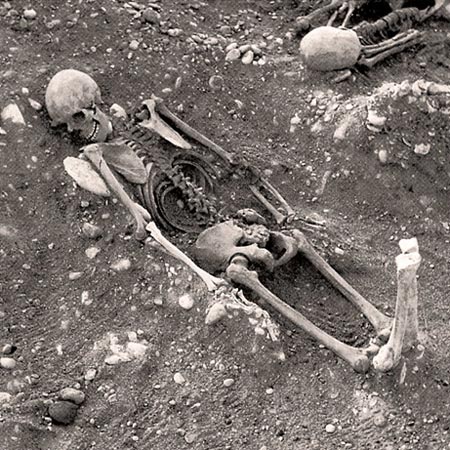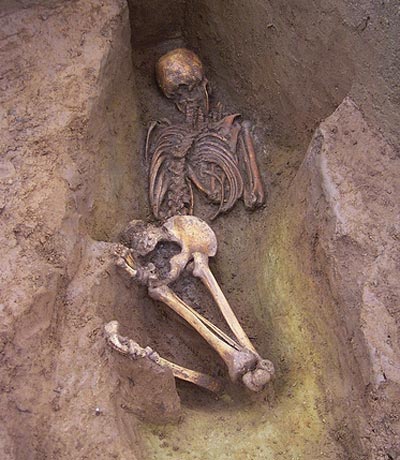The mystery of the prone remains
Placing a corpse face down in a grave was a form of humiliation or punishment for the dead in ancient societies, a Swedish scientist affirmed.

Two sets of Viking remains without coffins in Sweden. The remains in the corner of the photo were discovered in a prone position. Photo: Caroline Arcini.
Many works in world history and literature refer to the ritual of burying the dead in the prone position. This phenomenon is controversial among modern anthropologists. Some have suggested that the prone position of the remains was the result of inadvertent behavior or random incidents. But many other experts assert that it is an unusual burial ritual and represents a certain view of the living towards the dead.Caroline Arcini, a scientist with the Swedish National Heritage Council, said: “Ancient societies recognized that placing corpses face down was a form of humiliation or punishment for the dead. It is one of the most basic human behaviors.”.Arcini studied thousands of literary, historical and research works around the world to understand the form of burying the dead in the prone position. She discovered more than 600 people buried in this position in 215 cemeteries, from Peru to South Korea. 
Graves with prone remains are usually shallow and do not contain coffins. Photo: flickr.com.
Over the past 26,000 years, the majority of people buried in the prone position have been men. Prone skeletons appear in all types of graves (single graves, double graves, mass graves). These graves are often shallow and located at the edge of the cemetery. Most of them do not have coffins. Some corpses had their feet and hands tied. That status indicates they are criminals or prisoners of war.But in many cases the form of burial in the prone position is related to social position. People once found 80 bodies in unusual positions in a cemetery in Mexico. They were buried between 1150 and 850 BC. Among them, 6 male remains were found in a sitting position, while the remaining 74 skeletons were all lying prone.“It is very possible that people buried in a sitting position had a higher social status than people lying face down ,” Arcini commented.Arcini believes that religious and cultural conflicts may be one of the reasons leading to the strange burial form. For example, the majority of prone remains in Sweden were buried during the Viking era (from the late 8th to the 11th century), when Christianity began to penetrate Scandinavia.Not believing in gods, the Vikings certainly could not accept members of the Christian community. So they buried the bodies of religious people in a prone position to show their contempt. According to Arcini, after executing witches and monks who violated canon law, the ancients also buried them in a prone position.





